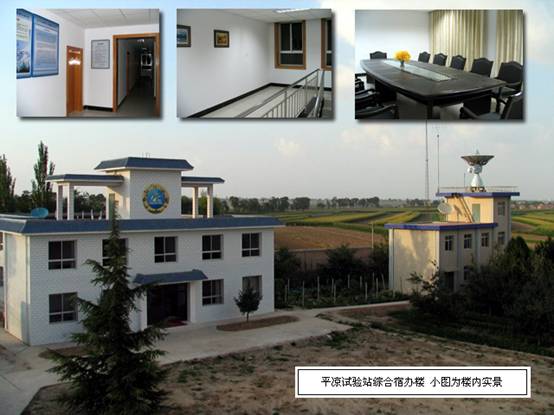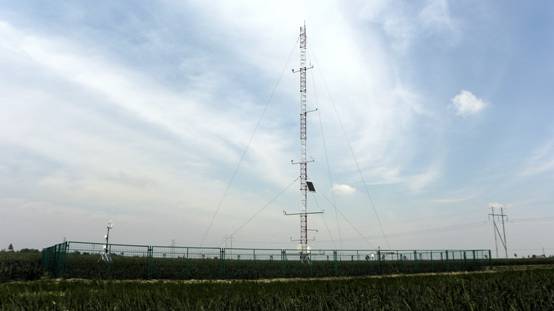1 Introduction
Pingliang Land Surface Process & Sever Weather Research Station (Pingliang Station), formally named “Pingliang Station of Lightning and Hailstorm Research” , Chinese Academy of Sciences, is located in the Baimiao mesa of Pingliang city (106°41′E, 35°34′N, 1630 a.s.l.), Gansu province. The station is located in the famous Liupanshan foothill, upstream of the Jing River, over the loess plateau tableland and is at the edge of the influence of the East Asian summer monsoon. The average annual rainfall is 510 mm.
Pingliang station was founded in 1972, and became a member of the special environment and disaster network, Chinese academy of sciences, in 2001. The station is a platform for observations, experiments and studies on land-atmosphere processes and their interactions with climate change and severe weather over the loess plateau. Research fields include interactions between land surface and atmosphere and atmospheric boundary layer processes, lightning physics, radar meteorology and weather modification. Through the development of researches on climate change, disaster weather, and regional sustainable development in the loess plateau area, we aim to solve scientific problems related to land surface processes, severe weather development, and their mutual interactions and provide technique support for solving the local ecological environment problems.

Overview of Pingliang station

Observation field
2 Objectives
To explore the land-atmosphere interaction processes over the loess plateau and their relationship with climate change and severe weather development, promote researches on climate change, severe weather and regional sustainable development in the region. Discuss and solve scientific questions on land surface process, strong convective weather, and their interactions, develop new detection, early warning and control technology for strong convective weathers, such as thunderstorm and hailstorm, provide technique support for solving the ecological environment problems in loess plateau.
3 Observations
Observations at Pingliang station mainly include the monitoring of climate change, boundary layer meteorology, surface radiation, surface fluxes, soil and vegetation parameters, rainfall, snow, and cloud physical processes.
4 Contact information
Prof. Ye YU
Tel: 0931-4967168,
Email: yyu@lzb.ac.cn
Mr. Tong ZHANG
Tel: 0931-4967682
Email: zhangt@lzb.ac.cn
Dr. Shiqiang CHEN
Tel: 0931-4967732
Email: csq@lzb.ac.cn
5 More information
http://www.casnw.net/WEB_TZ_PL/